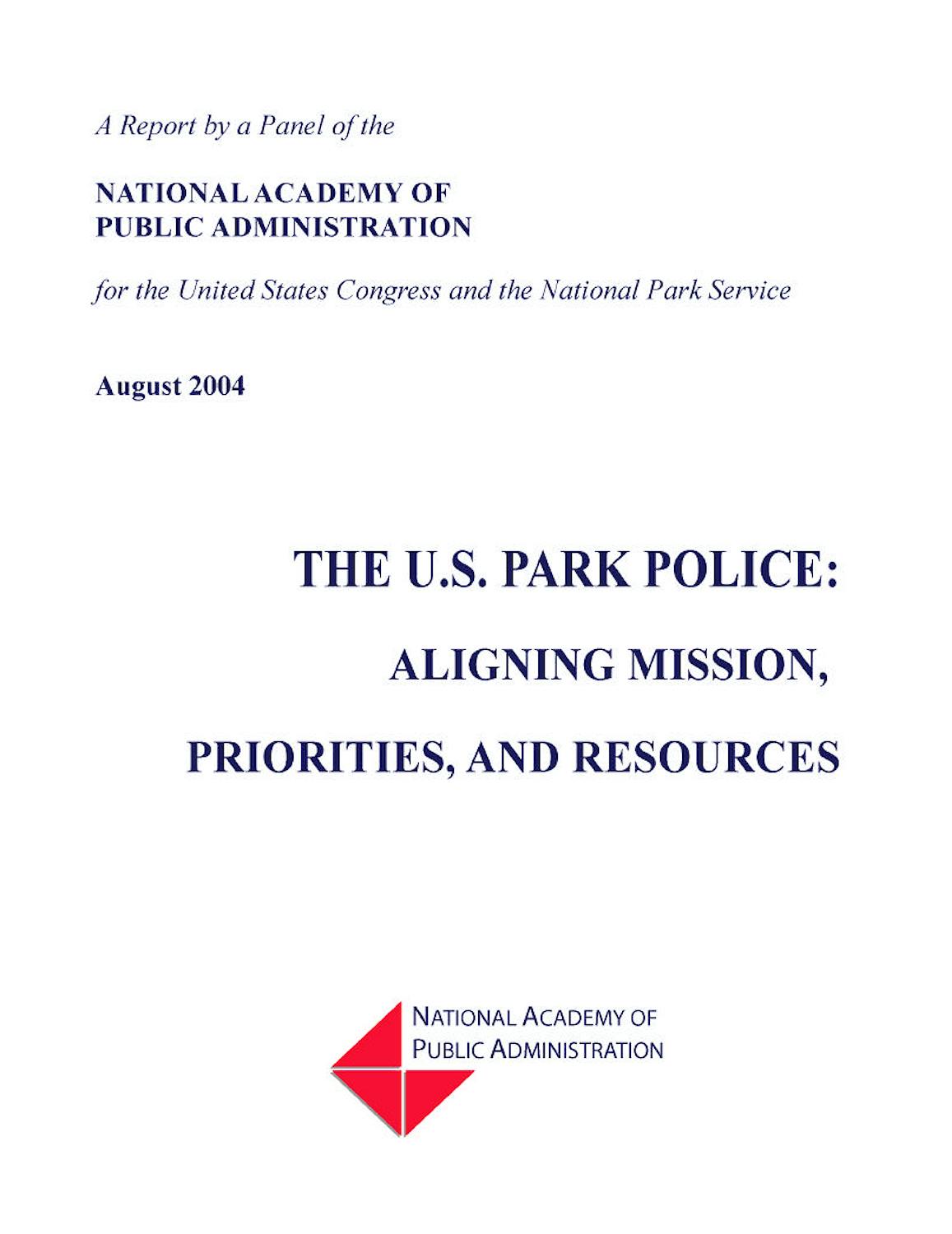
The U.S. Park Police: Aligning Mission, Priorities, and Resources
The U.S. Park Police (USPP) have protected federal land in the District of Columbia since 1791 and National Park Service properties in the New York and San Francisco areas since the mid-1970s. In 2000, Congress asked the Academy to review and evaluate USPP’s mission, its priority-setting process for law enforcement functions, and the adequacy of its systems for developing and controlling its budget and other resources.
The Academy made 20 recommendations designed to clarify USPP’s mission, set priorities for its diverse law enforcement functions and work activities, strengthen leadership and accountability, and improve financial and workforce management. This study is a review of the steps taken to follow through with the recommendations made in light of the 2001 terrorist attacks. This follow-up study was conducted in two phases: Phase I reviewed the implementation status of each recommendation, assess the reason for non-compliance, and identify possible new options. Phase II: Evaluate USPP’s mission, roles, and functions, the resources allocated to them, and their relative priorities; identify major changes in them since the 9/11 terrorist attacks; and assess the feasibility of adjusting current functions, assuming constrained budgets for the next few years.
Click the button below to view the View Study Report.
View ReportKey Findings
Although high-level meetings have taken place during the ensuing three years since the 2001 attacks, at both NPS and DOI, agreement has not been reached on a new mission statement for the USPP that distinguishes it from other federal and local law enforcement agencies. The Panel found NPS and USPP have sharply divergent views: USPP views itself as a full-service urban police force, principally focused on NPS parklands, NPS, on the other hand, views USPP as a more specialized police force principally focused on urban national parks. There also appears to have been disagreement about who had primary responsibility for mission definition. USPP’s broad role and diverse law enforcement functions reflect its long, evolving statutory history, much of which took place apart from NPS.
Recommendations
The 9/11 terrorist attacks brought substantial changes in NPS’ protection, security and law enforcement needs. Throughout NPS, the threat of a terrorist attack on a “national Icon” and the impact on visitors and the national heritage became a law enforcement priority. USPP received a $25 million anti-terrorism supplemental appropriation in FY 2002. It tried to use the funds to bolster its officer strength to address additional law enforcement needs; yet substantial officer attrition in 2002 and 2003 offset hiring increases. After taking a hard second look at the role, functions, organization, and resources of the USPP, the Panel's basic conclusion is: “You can't have it both ways.” Given its heightened responsibilities after 9/11 for protection of the nation's most important Icons and urban national parks, USPP cannot be an effective guardian of urban national parks and also attempt to be a full-service urban police force without a substantial increase in resources. It is even more urgent now than when first recommended in 2001 that the mission of the U.S. Park Police be clarified and priorities be set to meet needs established jointly by the DOI, NPS and USPP. Active and committed leadership at all three levels is essential for the Panel's recommendations to be effectively realized.